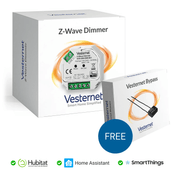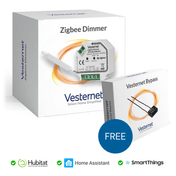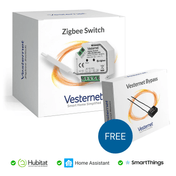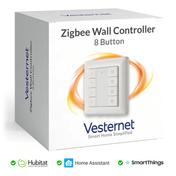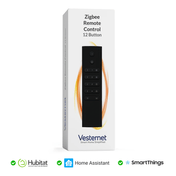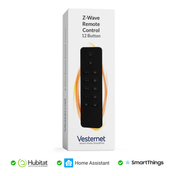
You may have noticed that a few weeks ago we added a brand new range to the site - Honeywell Doorbells.
We're always on the look out for new devices that can be leveraged into our Home Automation systems and we know from past experience that Honeywell make excellent products, so it was a no-brainer to add their doorbell range!
This was quite a timely introduction since my own doorbell was in need of an upgrade. Although it's currently integrated into my HA set-up and works well enough, I've been looking for something a bit more up-to-date for a while now.
I also had a few unique requirements:
- I work from home & listen to loud music, so a replacement doorbell would need to be LOUD so I can hear it, or have the ability to use multiple chime units so I can install one in my office as well.
- During the hotter summer months I work from a garden office, so the ability to have audible / visual notification out there too would be good.
- My house has a side gate to the rear garden and often couriers and delivery drivers will come to the side gate first before ringing at the main front door, so having additional bell-pushes would also be useful.
I know that technically I could implement all this using the existing set-up - a Fibaro Door & Window Sensor currently notifies my Z-Wave controller whenever the doorbell is rung anyway, so I could add Z-Wave sirens or relays to extend this fairly easily.
But the Honeywell devices looked really cool and I tend to try and make sure that all my Smart Home systems run completely autonomously and be 100% reliable with any Smart aspects as a nice-to-have addition on top. This makes it much more acceptable to the rest of the family and ensures things carry on working normally even if there is an issue with the smarter parts of the system!
So a couple of days later I had my hands on a Honeywell DC515NG and a Honeywell DC915SCV and as you can see from the un-boxing videos below, they certainly don't disappoint in terms of quality!
I chose these two kits to give me two chime units (one for the main house and one for the garden office) as well as two bell-pushes - a wireless one for the side gate and a wired-to-wireless one for the front door (because I wanted to retain our existing brass bell-push).
A really cool feature with the Honeywell Doorbells is that you can mix and match bell-pushes and chime units and link multiple bell-pushes to a single chime unit or a single bell-push to multiple chime units! So I knew that this should allow me to meet all of the requirements laid out above.
One slight disappointment was that while the bell-pushes came with batteries the chime units themselves didn't, so it's worth ensuring you have the correct batteries to hand to coincide with your order being delivered.
We can forgive Honeywell for this though as the DC515NG just uses AA batteries which I always have a good supply of to hand and while the DC915SCV uses C-Cells it can be powered from a standard micro-USB power supply as well. That's also not included either though, but most of us will have these knocking around somewhere I'm sure!
Other than that, both kits come with absolutely everything in the box that you'll need to install them, all the screws, brackets and sticky pads are present. The chime units can also be left free-standing if you don't want to wall-mount them - they have nice little rubber anti-slip strips on the bottom and this allows them to sit unobtrusively on a shelf or sideboard.
After a quick run through of the instructions and a play with all the functions on each kit, we were quite impressed.
DC515NG
The DC515NG kit comes with the wireless bell-push pre-paired to the chime unit, so after adding batteries it literally works out-of-the-box. You can choose between a handful of different sounds and adjust the volume level - at the highest level it's really loud!
You can also change the LED visualisation from the top or side LEDs, or both, as well as choosing from 6 different colours. Pressing the bell-push sounds the chosen melody once and then flashes the LEDs for 12 seconds (if they're turned on).
There's a tiny delay between pressing the bell-push and the chime unit doing it's thing, less than a fraction of a second, so it's not quite as instant as the old-school ding-dong that I had with the existing wired door bell. I'll soon get used to that I'm sure and in reality I'd never notice it in normal use, it's only while testing that it's apparent as I have both the bell-push and chime unit sat on the bench at the same time.
A neat trick is that pressing the bell-push multiple times won't repeat the sound, unless it's already finished playing. This is good as it stops people spamming the bell-push and making it ring multiple times - something that I personally find really annoying!
There's also the ability to mute the sound manually or by timer, so that you can set it to silent for 3, 6, 9 or 12 hours - a neat idea for people with babies that need to go down for naps, or to turn off the sound in the evenings around Halloween or Christmas time to keep trick-or-treaters and carol singers at bay ("get orrrrrffffff my laaaaaand!")
DC915SCV
The DC915SCV kit includes a "wired to wireless" converter that allows you to convert an existing wired bell-push to be used with the wireless chime unit. As mentioned above, I chose this kit to allow me to keep the existing wired brass bell-push on the front door.
The converter allows you to connect two wired bell-pushes and supports either a dry-contact (normal) bell-push or an 8V - 12V AC bell-push - useful if you have a transformer-based system that provides power to the bell-push so that it can light up at night.
Strangely the converter wasn't pre-paired to the chime unit this time, but this was just a case of pushing the pairing button on it and then pushing either the bell-push (if you've got as far as connecting it up) or pushing the small button under the mounting bracket of the converter. Simple stuff.
The rest of the functions are identical to the DC515NG, so I won't repeat them here!
I chose to install the larger DC915 chime unit inside the house in the downstairs hall and the smaller DC515 chime unit in the garden office. As mentioned previously all the fixings are in each kit so this was simply a case of screwing the brackets to the wall so the chime units could be wall mounted.
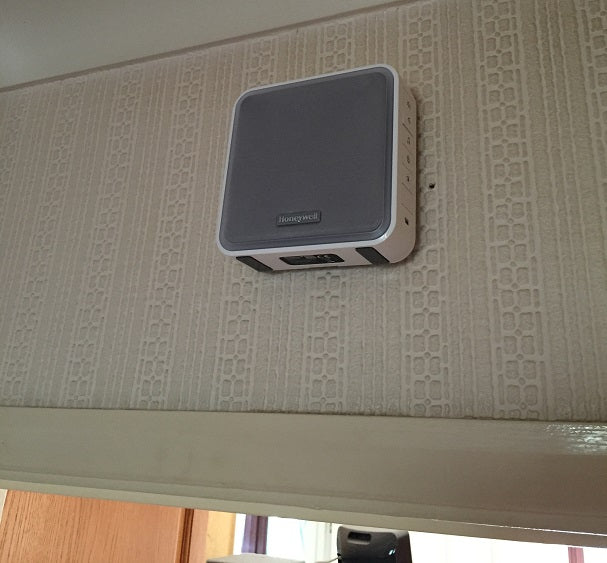

Once the physical installation was done, I "cross-linked" the bell-pushes so that they were both paired to both chime units. The instructions aren't particularly clear here, but I stumbled across the fact that you can set different sounds and settings for the LEDs for each bell-push! You'll need to read the instructions carefully and then re-read them another couple of times, but basically after you press one of the bell-pushes any changes that you make to the volume, sounds or LEDs within 12 seconds are then set for that bell-push alone.
This was an added and unexpected bonus as it meant that I could have different sounds and LED colours to signal that either the front door or side gate bell-push had been pressed!
So far so good and all working perfectly - the bell-push installed at the side gate makes both the chime units sound with a "Big Ben" tune and the existing brass bell-push at the front door makes both the chime units sounds with a "normal" ding-dong tune (via the wired-to-wireless converter).
I initially had some reservations about RF range (after all, we all know how this can affect things like Z-Wave, WiFi, LightwaveRF, Visonic, etc). Happy to say that there's been no such issues at all over the past few weeks of usage with either kit.
Furthermore, the volume is more than good enough for hearing over my loud music, although I may well install another chime unit upstairs in the future so I don't have to have the one downstairs so loud as it keeps freaking out the kids at the moment!
All in all I was pretty pleased with the new set-up ..... BUT ..... and there's always a BUT ..... the keen eyed amongst you will notice that I've now lost the integration with my HA system :-(
This is true and I did spend some considerable time trying to see if there were details of the Honeywell "ActivLink" 868MHz RF protocol available that might allow the doorbells to be integrated directly with something like an RFXCom USB adapter (there's an 868MHz version coming soon).
Sadly at this time this isn't possible, so I simply expanded on the old integration method and used a couple of small relays powered from a 9V battery and wired in parallel with the wired bell-push on the front door.

The wired bell-push energises the relay coils from the 9V battery and one relay connects to the dry-contact input on the Honeywell wired-to-wireless converter and the other relay connects to the dry-contact input on the Fibaro Door & Window Sensor. I had all the components lying around already, including the "project box" that houses it all, so it was a pretty quick build for me to complete - if you're going to attempt something like this yourself then all of the bits can be sourced on-line or from your local electronics store.

With the project now finished and the integration with my HA system reinstated I'm happy with how it's turned out. The chime units are working well for visual and audible notifications of people at the front door or side gate and my Smart Home can carry on using the bell-push event for all sorts of useful stuff like sending notifications, turning on lights and sending CCTV image snapshots.
I'm now also considering replacing the wireless bell-push on the side gate with another wired-to-wireless converter as these are available to purchase separately and making a waterproof version of the above so I can get the side-gate bell-push events into my HA system too. Although to be fair that's probably overkill, so that'll probably be left as low priority on the to-do list for now!
Hope you enjoyed this review, check out the Honeywell Doorbell range for yourself here.
Martyn









